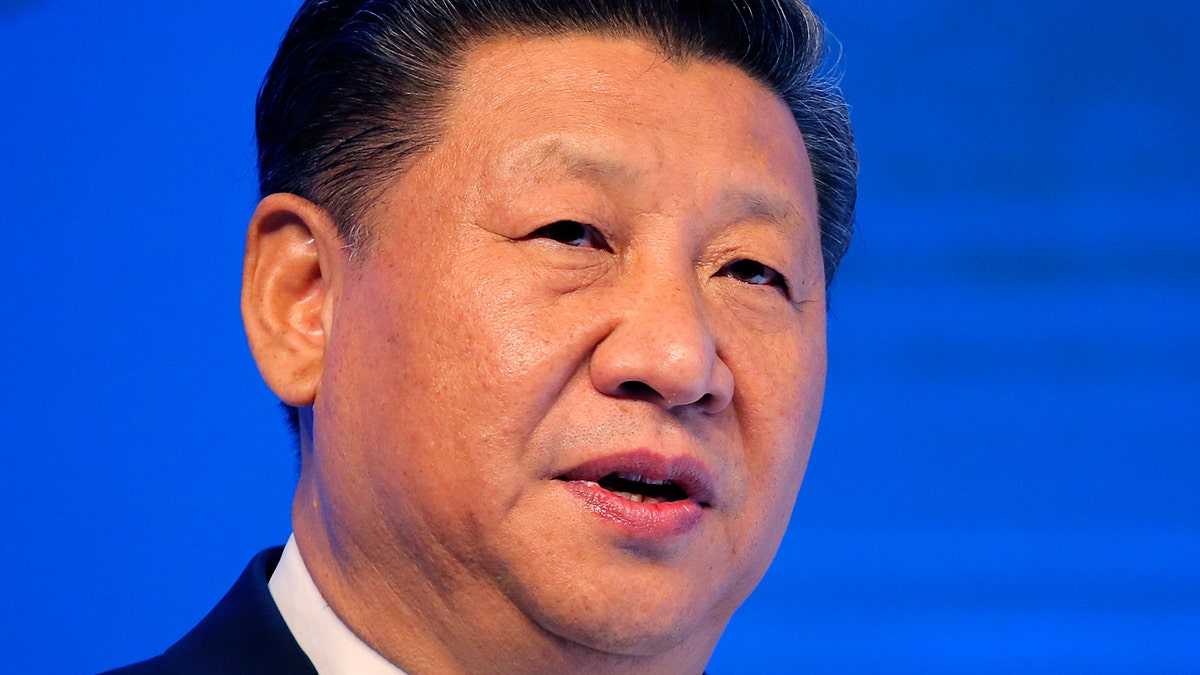
Xi Jinping, General Secretary of the Communist Party of China, appears in this undated photo. (Credit: Associated Press)
Candidate Donald Trump promised to bring jobs back to America, rebuild our military, and on trade get tough with China, which he said was “raping” our economy. President Trump may find his administration the victim of exactly the job-exporting policies he railed against and face the very real possibility that China could cut off U.S. access to 17 rare materials vital to our advanced aircraft and guided missile systems.
Among major U.S. military projects imperiled by a potential China squeeze play is a $340 billion Navy program to create new, Columbia-class nuclear submarines, and a new electro-magnetic aircraft launch (EMAL) system, which the Navy hopes to use for catapults that launch planes from aircraft carriers.
The 17 materials, known as rare earth elements (REE), are essential to the production of the high-performance permanent magnets used in both those systems, as well as in motors and missiles, GPS systems, satellite imaging, night vision goggles, and consumer products like smartphones and flat television screens. And for precisely the reasons Candidate Trump cited for the decline of American manufacturing and the loss of U.S. jobs, China is now in a position to cut off our supply of processed rare earth elements if it feels Trump is pushing too hard on trade and economic issues—or anything else.
“Absolutely, China could cut off the supply,” said Jeff Green, a defense industry analyst in Washington, D.C. “Processing rare earths is the end of the hose. China controls the spigot the hose is attached to.”
This dire situation came about largely as a result of a U.S. decision to rely on China, which is estimated to produce 90 percent of all processed rare earth elements sold to U.S. consumers, including the Pentagon. In 1995, the Clinton administration allowed two U.S. rare earth producers, in North Carolina and Indiana (the home state of Vice President Mike Pence) to go out of business. They transferred their production capacity to China, leaving it as the world’s only large-scale REE supplier.
The supply chain worked smoothly until 2010, when the Japanese navy detained a Chinese fishing boat as part of a territorial dispute. China promptly choked off REE sales to Japan, and imposed worldwide supply quotas. Almost overnight, the price of REEs soared 4,000 per cent worldwide, demonstrating China’s ability to control the market at will.
Sensing an opportunity, a Colorado-based company called Molycorp tried to ramp up American REE production, using a mine and plant in southeastern California known as Mountain Pass. When China lost a World Trade Organization challenge and revoked its production quotas, the price of REEs tumbled and Molycorp found itself refining a product that could be made much more cheaply, and of higher quality, in China.
The Obama administration, determined to support renewable sources of energy, declined to bail out Molycorp, even while pumping hundreds of millions of dollars into a solar panel company known as Solyndra. Solar cells also use REEs. Solyndra ended up importing solar cells from China. The company went bankrupt, as did Molycorp in 2015.
It is unclear what the Trump administration can do to eliminate U.S. reliance on China for REEs, at least in the short term. Later this month, a court in Delaware is expected to authorize an auction to bring Molycorp out of bankruptcy, and, potentially revive REE processing in California.
The problem is that REE production technology was transferred to China during the Clinton administration, and the Chinese are now thought to have an insurmountable advantage.
In 1992, Chinese leader Deng Xiaoping, said, “The Middle East has oil. China has rare earth.”
The implications of that remark are now being felt. They may include profoundly challenging a U.S. president who came to power promising to bring China to heel.
